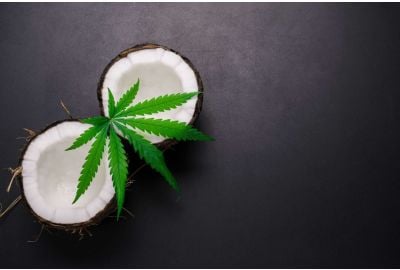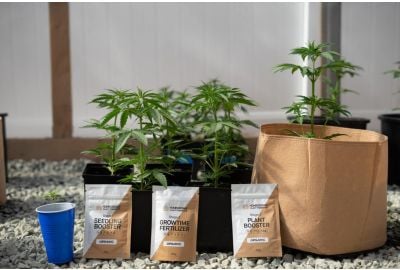Cannabis Nutrients: Everything You Should Know About Fertilizers
How much do you honestly need to know about cannabis nutrients?
While weed fertilizers may seem all-important, the truth is that, when growing cannabis, the right nute balance means a successful harvest.
Join us as we look at the role of various cannabis nutrients and what to look out for when buying marijuana fertilizer.
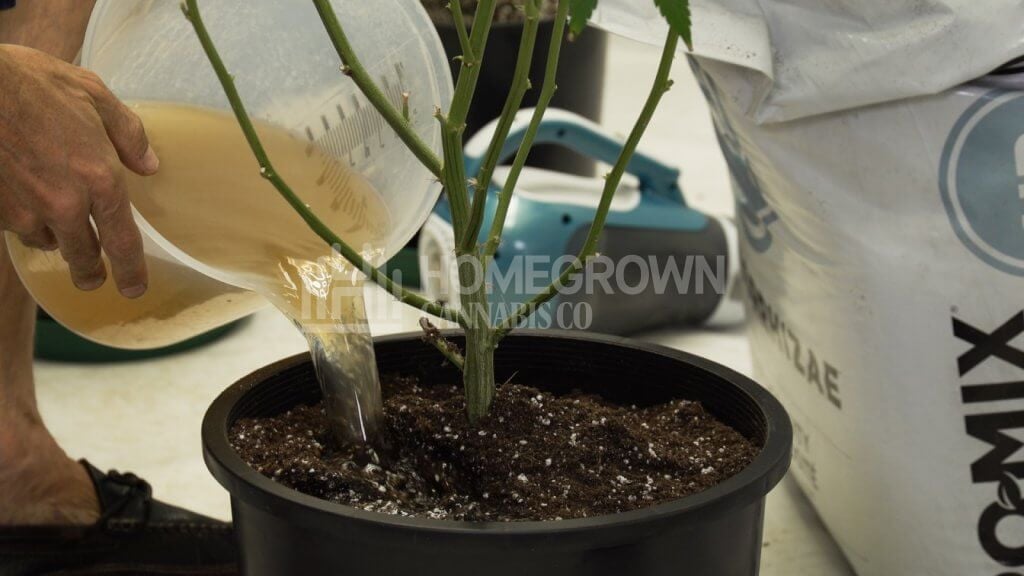
Why are weed fertilizers so important?
Let’s be honest. We all hope to grow big buds and harvest a healthier crop of plants—cannabis nutrients are the answer to these prayers, aiding in better, healthier, and more substantial growth.
Before you buy seeds, understand which fertilizers they’ll need as each growth stage has different nute requirements.
In the vegetative stage, fertilizers help produce dense leaves. Baby plants require more nitrogen and less phosphorus to stimulate growth.
When the plant enters the flowering stage, fertilizers with less nitrogen and more potassium enhance fruiting and maturation—more details on that later.
The required cannabis nutrients are found in marijuana fertilizers—but are they all the same, and which one should you look for?
Types of marijuana fertilizers
It’s important to know about the fertilizer you’re going to choose.
There are two types of fertilizers that you can use, and both of them can produce outstanding results when applied correctly.
Choosing between the two methods can depend on your personal preferences. Let’s look at the main differences between the two cannabis fertilizer options.
Organic fertilizer
These products contain the necessary cannabis nutrients for your plants, derived from organic sources (animal and vegetable waste).
Organic fertilizers release the nutrients into the soil for slow absorption, reducing the risk of nutrient burn and increasing the beneficial elements to the plant.
An organic cannabis fertilizer can improve the quality and diversity of life in the soil. It also enhances airflow and water retention.
When using your fertilizer, pay attention to your plants for signs of nute deficiencies as they’d take longer to absorb marijuana nutrients in organic powder form. This can increase damage to the plants.
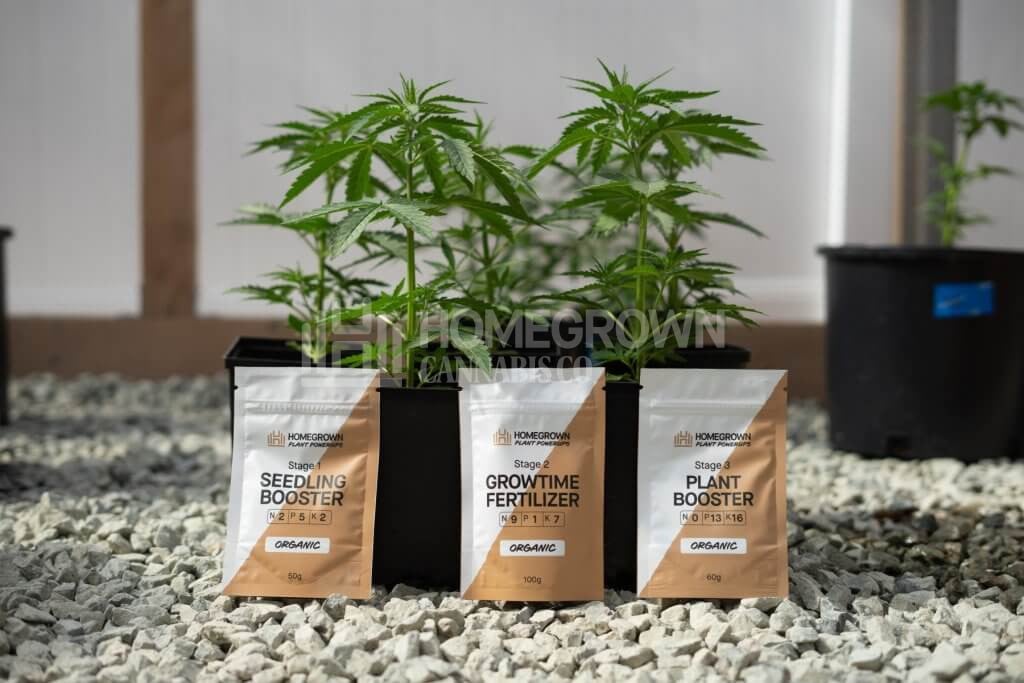
Chemical fertilizer
Chemical fertilizers contain the necessary nutrients for weed and are instantly available to your plants.
A chemical marijuana fertilizer comes with a specific ratio of essential and beneficial minerals for each growth stage, giving you more control.
Providing the correct amount of marijuana nutrients produces bigger yields and higher THC content.
If your plant has a nutrient deficiency, the rapid intake of essential minerals can immediately improve your plant’s health.
This could be the best fertilizer for marijuana because it’s generally easier to use.
Be careful of overfeeding your plants, though, as this could result in excess nutrient stress or burn. Follow the instructions, and perhaps start with lower doses which you can gradually increase.
Cannabis nutrients: What do weed plants need?
Now that you know more about the different fertilizers, how can you tell between the different nutrients for weed?
Let’s look at what your plants need.
Macronutrients
Macronutrients are elements required in large quantities.
These nutrients are imperative for cannabis plants to grow strong, healthy, and produce an abundant yield. They’re generally focused on and featured in fertilizer products.
The three best nutrients for cannabis are nitrogen (N), phosphorus (P), and potassium (K)—collectively known as NPK.
When looking at fertilizer products, pay attention to the NPK ratio—ensure that the measurements are sufficient for your plant’s growth stage.
Nitrogen (N)
During the vegetative stage, nitrogen is primarily responsible for your cannabis plant’s development.
Nitrogen plays an essential role in photosynthesis, as it’s a part of chlorophyll, which the plant uses to turn sunlight into energy and grow. It’s also a protein source, preventing your plants from becoming weak.
As one of the most important marijuana nutrients, it helps create nucleic acid in the plant’s DNA or RNA, assisting the plant’s cells grow and multiply.
Phosphorus (P)
Everyone wants their plant to produce large, healthy buds.
Your fertilizer should contain an adequate amount of phosphorus, a vital nutrient for weed that helps make all nutrients available for the plant to use.
If your plant has a phosphorus deficiency, it’ll show signs of undeveloped roots and a purple hue in the veins of your plant’s leaves.
Potassium (K)
Potassium is one of the cannabis nutrients that holds down multiple jobs for the family.
It’s mainly responsible for regulating the systems that keep your plant healthy and growing.
Finding a marijuana fertilizer with sufficient potassium is imperative because your plants can become weak and starved for energy without it. They’ll appear burnt as they cannot regulate the exchange of CO2, H20, and oxygen.
Potassium functions hand-in-hand with nitrogen as it triggers ATP production, creating glucose that stores energy produced in photosynthesis.
Secondary nutrients
Your weed plants require more than just the three primary cannabis nutrients to grow and survive.
These secondary nutrients play crucial roles in plant growth.
Magnesium (Mg)
Without magnesium, plants can’t generate glucose from photosynthesis.
Magnesium is the central molecule in chlorophyll, and—after glucose creation—it helps metabolize it.
A lack of these marijuana nutrients is evident if your plant has yellowing leaves and discoloration in the veins.
Calcium (Ca)
Just like humans, plants require calcium to grow and function.
Calcium keeps the structure of cell walls in the plant together.
A lack of calcium stunts new growth, causing the leaves to curl up and make rusty spots appear on the plant.
Sulfur (S)
When looking at the best nutrients for cannabis, sulfur has several functions that help your cannabis plant.
Sulfur helps transform proteins, distribute chlorophyll, increases root growth, and contribute to overall development.
It’s a part of the amino acids, supporting transpiration and metabolism.
Sulfur is a slow-moving cannabis nutrient distributed throughout the plant.
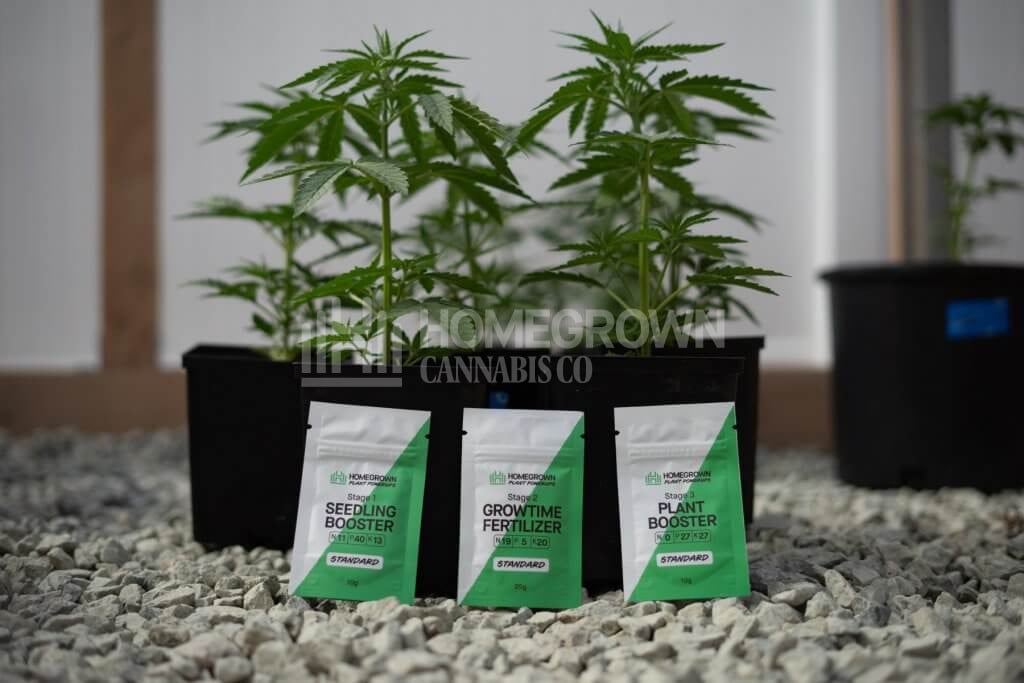
Micronutrients
Cannabis plants make use of several other nutrients in smaller quantities.
These are known as micronutrients, trace elements or trace nutrients.
Micronutrients function primarily as catalysts to the plant’s growth, aiding in the utilization of other nutrients.
These nutrients are necessary at low levels but can easily reach toxic levels. Ensure that you always follow the instructions on your marijuana fertilizer, adhering to the recommended volumes.
These cannabis nutrients are important to keep a lookout for:
- Zinc (Zn)
- Manganese (Mn)
- Iron (Fe)
- Boron (B)
- Chlorine (CI)
- Cobalt (Co)
- Copper (Cu)
- Molybdenum (Mb)
- Silicon (Si)
- Nickel (Ni)
- Sodium (Na)
- Fluoride (F)
As you learn about how marijuana plants absorb nutrients, be strict with the recommended guidelines.
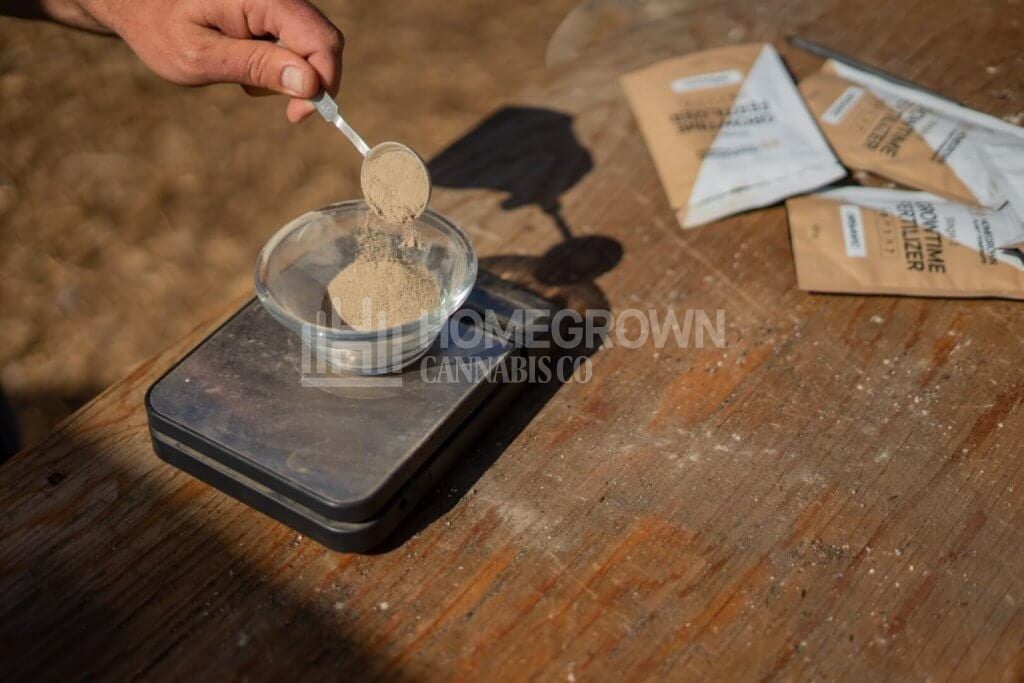
How to mix and prepare marijuana nutrients for each stage
Now that you know which marijuana nutrients to use, how and when do you feed your plants?
It’s just as easy to overwater as it is to overwhelm your plants with too many nutes.
You can find the essential nutrients in different fertilizer products. Look for a product for each stage of your plant’s growth.
The best marijuana fertilizer comes with a dose measure and schedule chart on the label.
How do you tell which product to get for your plant?
Pay attention to the NPK ratio, as mentioned earlier.
Top products present two solutions containing nutrients for weed.
‘Grow’ solutions are high in nitrogen for vegetative growth.
‘Bloom’ solutions are high in phosphorus for flower development.
The NPK ratios mentioned below are merely a recommended guideline. Pay close attention to your plants for signs of deficiency and follow the product instructions carefully.
Best nutrients for veg stage
The best nutrients for the veg stage should be high nitrogen, low phosphorus, and moderate potassium.
How do you begin the feeding process?
You can start your seedlings on a basic 2:1:2 fertilizer for a week as they start entering their vegetative growth stage.
It’s better to start small in the beginning to avoid nutrient burn—when your plant receives more marijuana nutrients than it needs.
You’ll see burnt, brown leaf tips and sometimes dark green leaves, which means the plant can’t move water and nutrients properly.
If you’d like, you can kickstart growth by opting for a 4:2:3 cannabis fertilizer.
As they enter the mid-veg stage, you’re going to want to increase the ratio—helping them develop strong, luscious, healthy foliage.
You can opt for a 10:5:7 fertilizer with the best cannabis nutrients at this stage.
In the late veg stage, reduce nitrogen levels and prepare your plants to switch to a “Bloom” solution.
You can opt for a 7:7:7 fertilizer in the last week of your veg stage.
Best nutrients for the flowering stage
The best nutrients for the flowering stage are less nitrogen and more potassium to promote the growth of your flowers.
You can start the flowering stage with a 5:7:10 fertilizer during the first two weeks.
After that, keep increasing all three nutrients, keeping potassium concentrations higher than nitrogen and phosphorus.
By the mid-flowering stage, you can opt for a 6:10:15 fertilizer.
During the final stretch of flowering, decrease the nutrients by using a 4:7:10 marijuana fertilizer. Consider HMGN Standard nutrient pack which is the best for flowering stage.
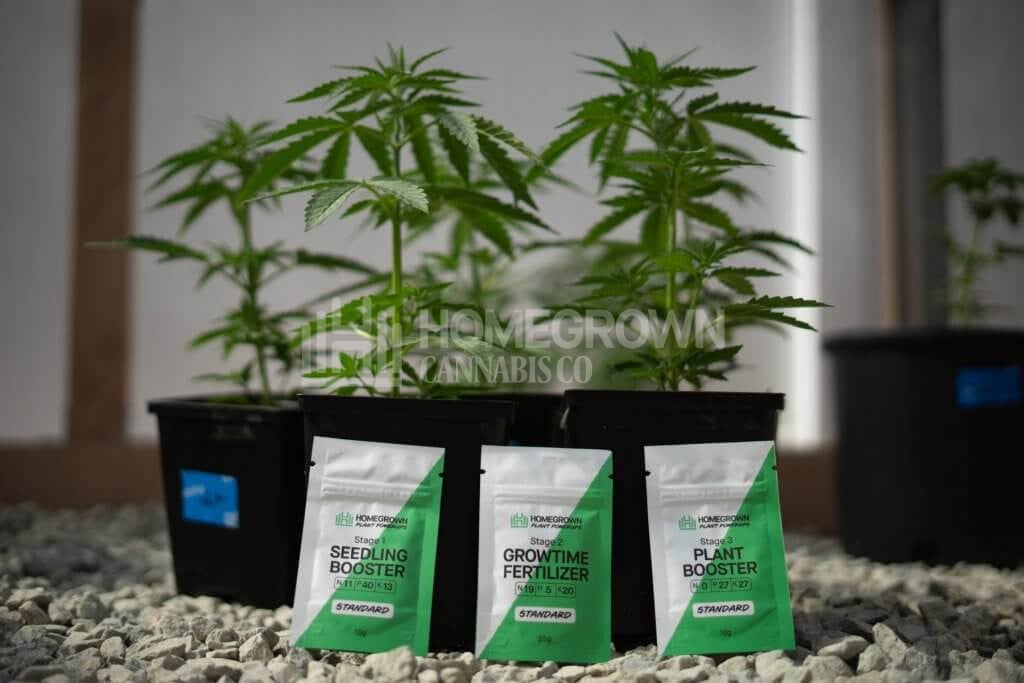
How to read fertilizer charts and numbers
Most products have a fertilizer chart (feed chart), helping you to provide your plants with the proper nutrients at the right time.
How do you read a fertilizer chart? It’s pretty simple!
Using an x- y-chart, a quality cannabis fertilizer uses a typical 12–13 week growing cycle to help you determine your plant’s needs.
It’ll tell you the ratio needed for the varying weeks of the plant’s life cycle.
How often to feed your plants with weed fertilizers
You can feed your plants their nutrients once a week.
A good marijuana fertilizer provides a feed-to-water ratio.
Some feed charts tell you the PPM (Parts Per Million) range for their solutions.
You can buy a PPM Meter and measure your cannabis nutrients before feeding for better accuracy.
After feeding your plants, check on them regularly to ensure your soil’s correct PPM and conductivity levels. This step ensures that your plants are absorbing nutrients properly.
FAQs related to marijuana plant food
Who makes the best nutrients for cannabis?
Remember that when choosing your marijuana fertilizer and cannabis nutrients, it’s important to consider the changing needs of your plants as they grow and bloom.
Homegrown Cannabis Co. has a range of specially formulated nutrients for the seedling, vegetative and flowering growth stages.
How do you add nutrients to soil?
When adding nutrients to your plant’s soil, you need to create a mix.
- Prepare high-quality water by heating it to about 71.6℉ to increase absorption by the roots.
- Following the instructions on your marijuana fertilizer, add your nutrients. You can use a PPM or EC meter to get accurate readings.
- Refer to the instructions to find out which pH level to maintain. Adjust the pH of your feed accordingly using a nitric or phosphoric acid pH down supplement.
- Providing your PPM, pH, and temperature levels are all correct, you can feed your plants. You can measure your run-off using your PPM or EC meter to ensure your plants take up their nutrients properly.
When should I stop giving my plant nutrients?
We know you want to keep your baby fed and healthy, but you need to stop giving cannabis nutrients a few days before harvest.
In the last few days, use plain, filtered, or high-quality water only.
Well done! You’ve successfully harvested your plants; now you can show off to your mates in the Homegrown Forum.
Your plants are thanking you for giving them all the right nutrients and looking after them so well. Enjoy your results!
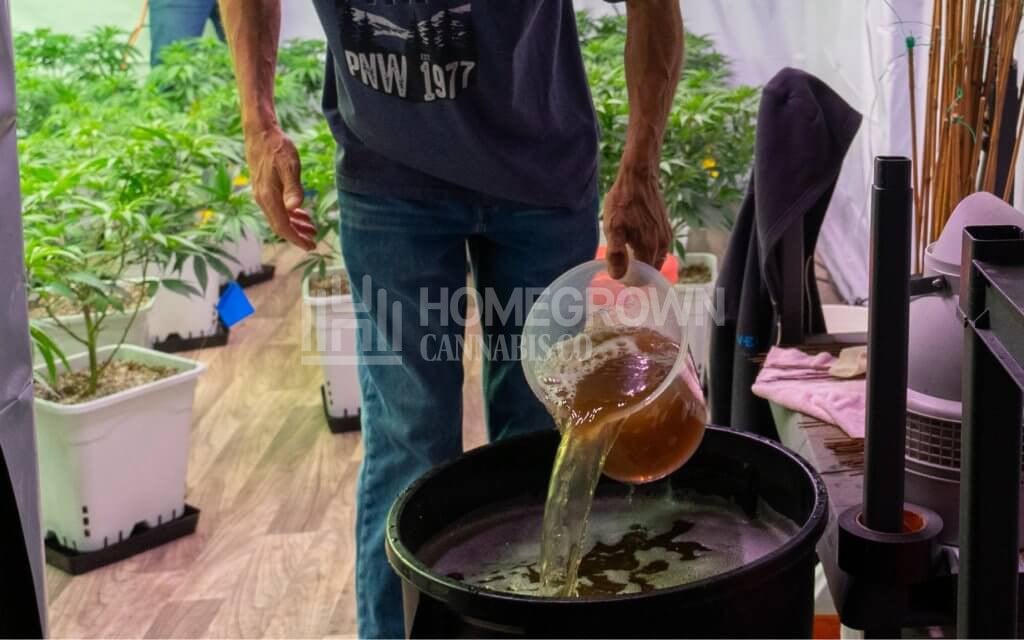
Key Takeaways about nutrients for weed
The application of cannabis nutrients is extremely important—try not to overuse anything.
When plants are young, they require very little—too much water or nutes can stress them out.
The best thing you can do for your plants is to check on them regularly. Get to know them, the timing of their cycles, and how this changes as they grow.
Ensure that your plants receive the best fertilizer for marijuana.
Keeping the pH and PPM levels as optimum as possible and getting these details right give you a far better chance of success.
Remember: Knowledge is power! Once you’ve established a good cannabis feeding schedule, you’ll start to see amazing results in your plants. For that, check out our nutrient packs and choose the best one for you for a bountiful harvest.
About the Author: Kyle Kushman
Kyle Kushman is a legend in the cannabis community. He is the modern-day polymath of pot: cultivator, breeder, activist, writer, and educator. After winning no less than 13 Cannabis Cups, there’s nothing this guy doesn’t know about indoor growing - he’s been there, done it, and is still doing it to this day!

